LSU Pivotal Football Moments
pivotal college football moment: A decision by a coach or athletic director that changes the momentum of a program or an action by a player that changes the momentum of a game.
pivotal college football moment: A decision by a coach or athletic director that changes the momentum of a program or an action by a player that changes the momentum of a game.
Steve Van Buren was inducted into the Pro Football Hall of Fame in 1965 after rushing for 5,860y and gaining 523 more on pass receptions as a running back for the Philadelphia Eagles.
Born in Honduras, Van Buren was orphaned when he was very young and sent to New Orleans to live with his grandparents. He didn't make the Warren Easton High School varsity football team until he was a senior in 1939. He had dropped out of school after his sophomore year and worked two years in an iron foundry, which strengthened him. Playing end at 175lb when he returned to Easton, he not only was "one of the finest pass snatchers" in the Prep league but also excelled when carrying the ball on reverses. He also handled his defensive duties at end admirably. He replaced injured starters in the backfield when necessary. As a result, he made several All-Prep teams.
Van Buren's performance earned him a football scholarship from LSU Coach Bernie Moore. With freshmen not eligible for varsity competition, the LSU staff moved him to fullback on the 1940 Baby Bengals. Up to 195 lbs, he was "the fastest footballer on the Tiger grid" and "just about the finest prospect LSU has grabbed in many years." During his freshman year, Moore said that, if he were eligible, Van Buren would be the first-string tailback on the varsity.
However, when Steve joined the varsity for the 1941 season, Moore installed him at blocking back in his single wing offense. In a sense, that showed the talent in the LSU backfield, starting with senior TB Leo Bird, the Tigers' triple-threat star. The other backs were senior Gerald Hightower and junior Walter Gorinski. Moore later said, "He probably was the greatest running back in Southeastern Conference history, and I used him as a blocking back until his last year. The folks in Baton Rouge never let me forget that."
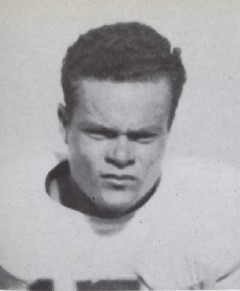
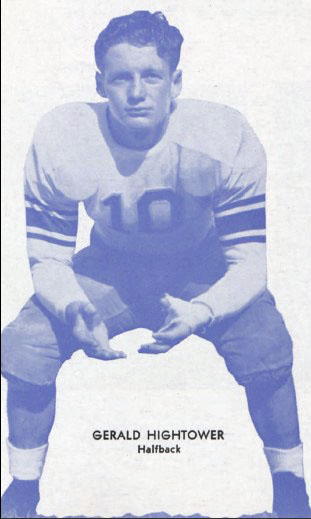
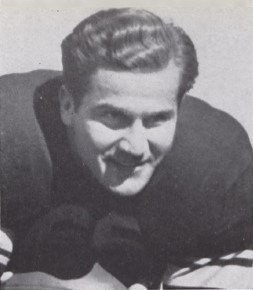
L-R: Steve Van Buren, Leo Bird, Gerald Hightower, Walter Gorinski
LSU Gumbo Yearbook Class of 1942
The 1941 Tigers were unable to improve on the 6-4 record of 1940. Entering the annual season-ending clash with Tulane, LSU was a mediocre 3-4-2. They could break even with a victory over the Green Wave, who entered the fray with a 5-3 mark in Red Dawson's sixth season as head coach.
As in 1940 when LSU upset Tulane 14-0, the Tigers were heavy underdogs.
Mike the Tiger led a parade of Tiger rooters through the New Orleans business section from the Union station where they arrived from Baton Rouge. The parade ended at the Roosevelt Hotel, the LSU headquarters until game time.
Despite the teams' so-so seasons, a record crowd of 50,764 filled Tulane Stadium on a overcast day with temperatures in the 50s.
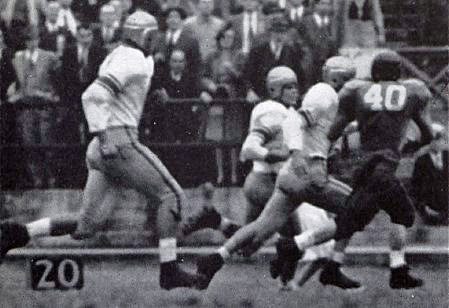
Steve Van Buren takes a screen pass down the sideline to the four.
LSU Gumbo Yearbook Class of 1942
Tigers Score First
Midway through the first period with the ball on the LSU 34, TB Bird took the snap as the Tiger line stepped aside and allowed the Greenies to converge on him. Then he tossed a screen pass to BB Van Buren, "who picked up blockers fast and whipped into the open down the left sideline, racing to the Wave four" where Walter McDonald caught him as he tried to cut back.
But the Green Wave stonewalled the Tigers, who gained only three yards on four runs, to take over on downs.
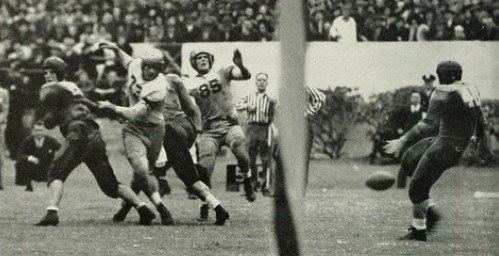
Tulane's Bob Glass kicks from his end zone.
Tulane Jambalaya Yearbook Class of 1942
After an exchange of punts, the Tigers were back in business at their 43. This time they would not be denied. Bird completed passes to E Dudley Pillow for 8y and a first down on the Tulane 42. After an incompletion, Leo found Pillow again for a first down o the 26. From there, FB Walter Gorinski broke through left guard behind fine blocking and plowed through two men at the four into the end zone. Bernie Lipkis booted the extra point. 7-0 LSU
The second quarter was scoreless although LSU threatened several times and ended the half with a pass from HB Billy McKinney to E Dilton Richmond inside the Tulane five.
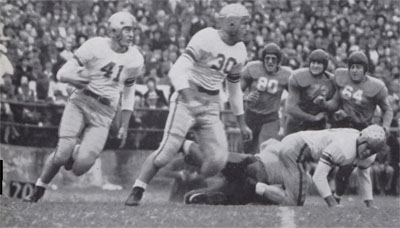
Leo Bird follows Walter Gorinski into the line.
LSU Gumbo Yearbook Class of 1942
LSU Adds to Their Lead
Greenie Lou Thomas intercepted a pass on his 25 and ran it back all the way to the LSU 8 where T Al James brought him down. But Tulane's chance to score was negated by 15y penalties for holding and roughing.
Early in the fourth quarter, Bird fired a 35y pass to E Jack Fulkerson to the Wave five. Gorinski gained two, then Bird burst through right tackle for the score. The PAT failed. 13-0 LSU with 5:40 left in the game.
W. I. Spencer wrote in the Baton Rouge Morning Advocate: "Tulane fell apart then. It was really tragic to their ardent backers. One man in the north zone dropped dead. Fights broke out by the hundreds on the Tulane side, and from the press box, there appeared to be grave insubordination on and around the Tulane bench and even on the field."
Gerald Hightower, playing "the greatest game of his life," intercepted a Tulane pass at midfield. Aided by no less than five Tulane penalties, the Bengals progressed steadily to the Tulane four. "The play was actually in chaos as Greenies refused to leave the field, refused to go on the field, and it appeared the Wave men had come to the 'parting of the ways' right there on the gridiron."
In the midst of the chaos, LSU scored its third touchdown when "Scotty" McKinney tossed a shovel pass to E Woody Holland coming around behind the line of scrimmage. Holland followed a great block by Van Buren and then leaped over the pile for his first collegiate touchdown. The extra point was missed again and the game ended a few minutes later. LSU 19 Tulane 0
Fighting broke out among the fans after the game when LSU students tried to take down the goal posts.
Eight days later, the attack on Pearl Harbor changed the life of every American.